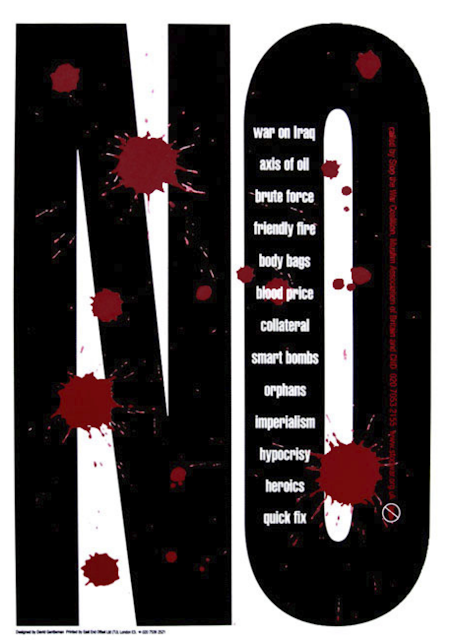I believe the strengths of the blog are the detailed research that I had undergone to assemble a complete view of the conflict. Also, how the creative activism can cause constructive change far better than just protesting or just writing an opinion. The amount of high-quality imagery is a strength of my posts, this backs up the arguments and give great visual reference to the text.
One of the weaknesses of my blog was choosing the best conflicts to write about with so many to choose from. I wanted to primarily pick influential conflicts that had high-quality design material which was not always the most well known. The 300/ 350 word limit per post was quite limiting. To talk about the conflict and then the activist work so it was balancing between the two, writing about one war per post was probably too much to fit into one post. I did a lot of reading for each individual post so maybe I should have paired the posts together to give me more space to present the different arguments. Looking back on my earlier posts, they seemed to be too opinionated and didn’t have enough fact to back my statements up, throughout the blog I believe the posts became more effective and thorough.
The varieties of mediums and forms of dissent has been really informative such as; films, posters, knitting. It has opened up my creative mind to think of possible ways I could bring these into my personal practice and that protest it's not only about posters and placards.
My understanding of how creative protest is used to construct change within conflicts has improved greatly. Alongside my growing knowledge of the conflicts, I have developed my knowledge of international design and arts, which has broadened my design practice.
The opinions I have formed are well informed and considered. This is because of the exaggeration and bias opinions on both sides of mainstream news and charity campaigns, who are also biased in their opinion. By balancing up information I have been able to gain my own perspective on the conflicts. The various forms of research material that I collected were either in books or online. The books that I read were very informative and visually engaging, I chose to read sections of these books because they were on the reading list and contained information on my topic. Websites that I used to reference were a mixture of news outlets and activist websites, their credibility is more limiting that published books and I found myself questioning where the information was coming from.
My personal practice has been affected by the module. I developed my own response to the Yemen war disaster which was well informed by research undertaken in this module. I am also looking at social change design agencies for my placement year as I believe I would enjoy working in this sector.
















































